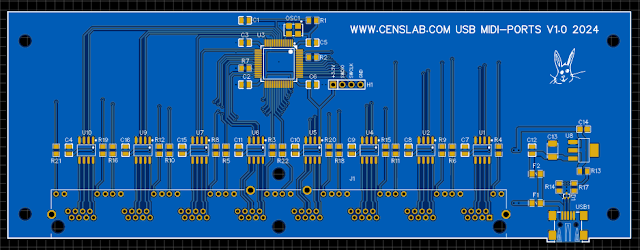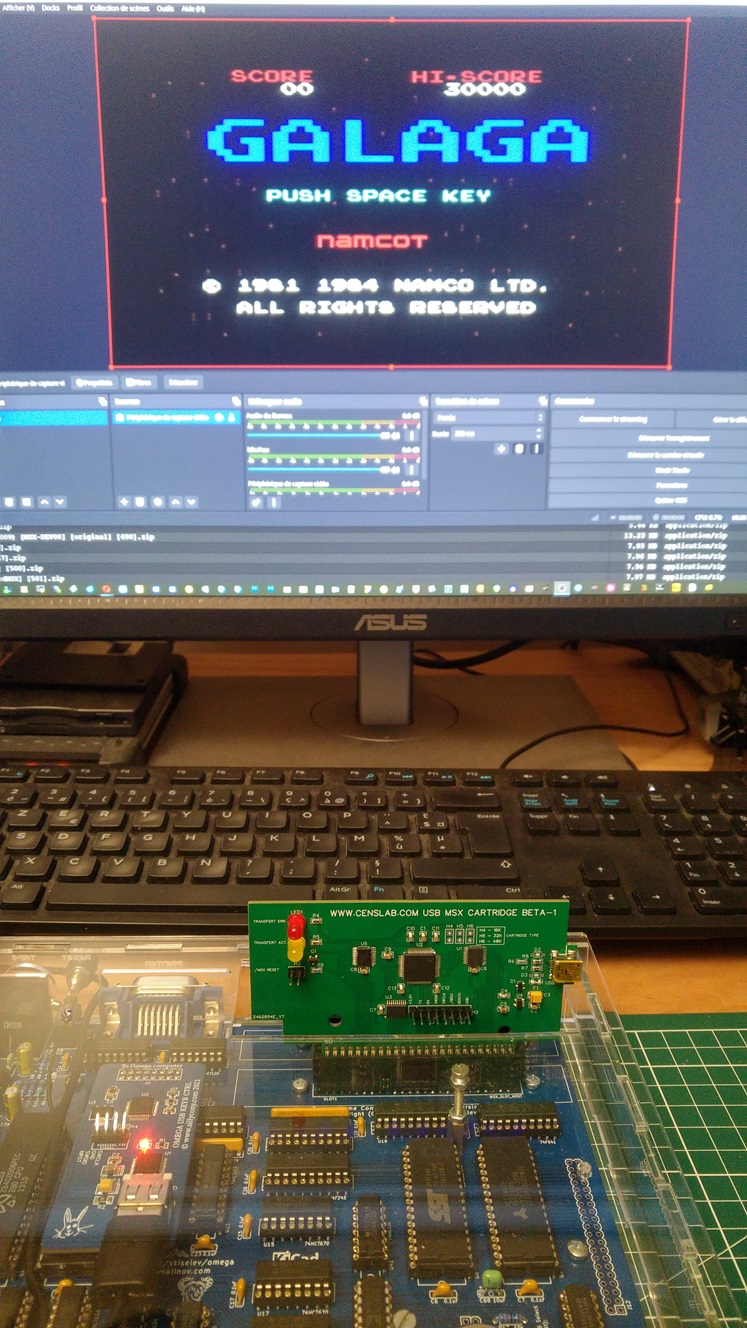Yes, because when I started this project, I thought I would create a minimal and fairly precise circuit, let's say, easily.
However, during the entire development, testing and modification phase, the appearance of the circuit no longer resembles the original one at all.
The first concept looked like this :
Unfortunately, despite the very interesting characteristics of the digital/analog converter, in fact, the converter used was not at all linear: a real disaster.
So, I redeveloped the system by changing components and also functions. I added the possibility of choosing the possible output values.
- from -5V to +5V
- from 0V to +5V
- from 0V to +10V
So I developed a second prototype corresponding to my new specifications and compatible with the euro rack format :
I wanted the board small so I condensed the component placement and also chose the smallest integrated-circuits possible. Unfortunately, this time again, an operational amplifier supposed to give a rail-to-rail output, started to 'go crazy' as soon as it reached 90% of its power supply. So I had to once again modify the concept and implement more 'traditional' circuits. And finally, I enlarged the circuit board because I found that the space between the connectors was not at all convenient.
Which ultimately gives me this:
And finally...
After all these modifications, tests, brain storming, I finally obtained the functional and above all precise outputs :
The very slight imperfections on this graph come from the change in range of my multimeter and not from the voltage converter. The result is perfect!
So, I was finally able to connect one of my keyboards to this converter and test the small rack modules that I had purchased for the occasion.
Ah, the charm of analog!!!
I therefore noticed that the VCOne modules do not all respond in the same way, and that the 1V/octave precision that they offer is sometimes completely crazy.
With certain modules, I manage to have a coherent range over more than two octaves, with others, in particular the '3340 VCO EU' module of Electrosmith, it's total madness. I can't even get a coherent octave. The module would have to be completely recalibrated.
I now understand better why 'small' 'not too expensive' synthesizers often only offer a 3-octave keyboard, and why 61-note analog monsters like the Moog One cost so much!
I can now calmly continue programming this system, and make a front panel allowing me to install it in a eurorack location : Yesss, I see the end of it!
Later...
Yes but... With a correctly calibrated module, in my case a VCO2 from PICO, plus a little VCF and controlled by a VCA triggered by an envelope generator, all passing through a small reverb, that's for sure, despite the 'disadvantages' of analog, sound is still something special!
Later, again...
If everything goes as planned in terms of programming and I have successfully implemented everything, this is what the front panel will look like :





















.png)

















